Casio fx-570ES PLUS, fx-991ES PLUS User Manual
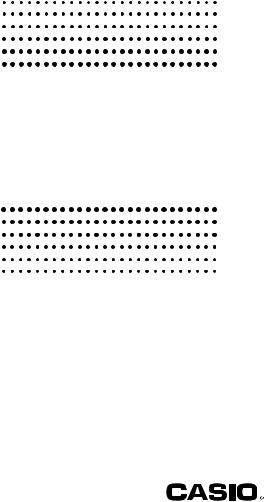
E
fx-570ESPLUS fx-991ESPLUS
User’s Guide
CASIO Worldwide Education Website
http://edu.casio.com
CASIO EDUCATIONAL FORUM
http://edu.casio.com/forum/

Contents |
|
Important Information ............................................................. |
2 |
Sample Operations.................................................................. |
2 |
Initializing the Calculator ........................................................ |
2 |
Safety Precautions .................................................................. |
2 |
Handling Precautions.............................................................. |
2 |
Removing the Hard Case ........................................................ |
3 |
Turning Power On and Off ...................................................... |
3 |
Adjusting Display Contrast .................................................... |
3 |
Key Markings ........................................................................... |
3 |
Reading the Display ................................................................ |
4 |
Using Menus ............................................................................ |
5 |
Specifying the Calculation Mode ........................................... |
5 |
Configuring the Calculator Setup .......................................... |
5 |
Inputting Expressions and Values ......................................... |
7 |
Toggling Calculation Results ................................................. |
9 |
Basic Calculations ................................................................ |
10 |
Function Calculations ........................................................... |
13 |
Complex Number Calculations (CMPLX) ............................ |
18 |
Using CALC............................................................................ |
19 |
Using SOLVE.......................................................................... |
20 |
Statistical Calculations (STAT) ............................................. |
22 |
Base-n Calculations (BASE-N) ............................................. |
26 |
Equation Calculations (EQN) ............................................... |
28 |
Matrix Calculations (MATRIX)............................................... |
29 |
Creating a Number Table from a Function (TABLE) ........... |
32 |
Vector Calculations (VECTOR) ............................................. |
33 |
Scientific Constants .............................................................. |
35 |
Metric Conversion ................................................................. |
37 |
Calculation Ranges, Number of Digits, |
|
and Precision ......................................................................... |
38 |
Errors ...................................................................................... |
40 |
Before Assuming Malfunction of the Calculator... ............. |
41 |
Replacing the Battery............................................................ |
42 |
Specifications ........................................................................ |
42 |
Frequently Asked Questions................................................ |
43 |
E-1
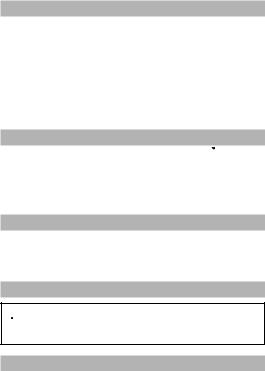
Important Information
•The displays and illustrations (such as key markings) shown in this User’s Guide are for illustrative purposes only, and may differ somewhat from the actual items they represent.
•The contents of this manual are subject to change without notice.
•In no event shall CASIO Computer Co., Ltd. be liable to anyone for special, collateral, incidental, or consequential damages in connection with or arising out of the purchase or use of this product and items that come with it. Moreover, CASIO Computer Co., Ltd. shall not be liable for any claim of any kind whatsoever by any other party arising out of the use of this product and the items that come with it.
•Be sure to keep all user documentation handy for future reference.
Sample Operations
Sample operations in this manual are indicated by a  icon. Unless specifically stated, all sample operations assume that the calculator is in its initial default setup. Use the procedure under “Initializing the Calculator” to return the calculator to its initial default setup.
icon. Unless specifically stated, all sample operations assume that the calculator is in its initial default setup. Use the procedure under “Initializing the Calculator” to return the calculator to its initial default setup.
For information about the , 1, B, and *marks that are shown in the sample operations, see “Configuring the Calculator Setup”.
Initializing the Calculator
Perform the following procedure when you want to initialize the calculator and return the calculation mode and setup to their initial default settings. Note that this operation also clears all data currently in calculator memory.
(CLR) (All) (Yes)
Safety Precautions
 Battery
Battery
•Keep batteries out of the reach of small children.
•Use only the type of battery specified for this calculator in this manual.
Handling Precautions
•Even if the calculator is operating normally, replace the battery at least once every three years (LR44 (GPA76)) or two years (R03 (UM-4)).
A dead battery can leak, causing damage to and malfunction of the calculator. Never leave a dead battery in the calculator. Do not try using the calculator while the battery is completely dead (fx-991ES PLUS).
•The battery that comes with the calculator discharges slightly during shipment and storage. Because of this, it may require replacement sooner than the normal expected battery life.
•Do not use an oxyride battery* or any other type of nickel-based primary battery with this product. Incompatibility between such batteries and product specifications can result in shorter battery life and product malfunction.
•Avoid use and storage of the calculator in areas subjected to temperature extremes, and large amounts of humidity and dust.
•Do not subject the calculator to excessive impact, pressure, or
bending. |
E-2 |
|
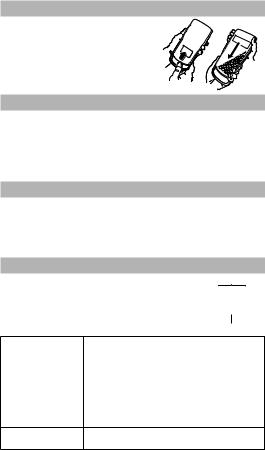
•Never try to take the calculator apart.
•Use a soft, dry cloth to clean the exterior of the calculator.
•Whenever discarding the calculator or batteries, be sure to do so in
accordance with the laws and regulations in your particular area.
*Company and product names used in this manual may be registered trademarks or trademarks of their respective owners.
Removing the Hard Case
Before using the calculator, slide its hard case downwards to remove it, and then affix the hard case to the back of the calculator as shown in the illustration nearby.
Turning Power On and Off
Press to turn on the calculator.
Press (OFF) to turn off the calculator.
Auto Power Off
Your calculator will turn off automatically if you do not perform any operation for about 10 minutes. If this happens, press the key to turn the calculator back on.
Adjusting Display Contrast
Display the CONTRAST screen by performing the following key operation:(SETUP)A (;CONT ). Next, use B and C to adjust contrast. After the setting is the way you want, press .
Important: If adjusting display contrast does not improve display readability, it probably means that battery power is low. Replace the battery.
Key Markings
Pressing the or key followed by a second key performs the alternate function of the second key. The alternate function is indicated by the text printed above the key.
The following shows what the different colors of the alternate function key text mean.
Alternate function
sin–1 D
D
s
Keycap function
If key marking text |
It means this: |
||
is this color: |
|||
|
|
||
Yellow |
Press and then the key to access the |
||
applicable function. |
|||
|
|||
|
|
|
|
Red |
Press |
and then the key to input the |
|
applicable variable, constant, or symbol. |
|||
|
|||
|
|
|
|
Purple (or enclosed |
Enter the CMPLX Mode to access the function. |
||
in purple brackets) |
|||
|
|
||
Green (or enclosed in
Enter the BASE-N Mode to access the function.
green brackets)
E-3
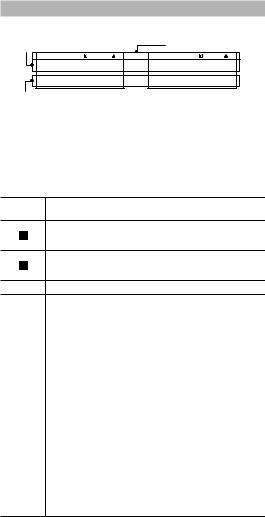
Reading the Display
The display of the calculator shows expressions you input, calculation results, and various indicators.
Input expression |
Indicators |
Math |
Math |
Calculation result
•If a indicator appears on the right side of the calculation result, it means the displayed calculation result continues to the right. Use C and B to scroll the calculation result display.
•If a E indicator appears on the right side of the input expression, it means the displayed calculation continues to the right. Use Cand Bto scroll the input expression display. Note that if you want to scroll the input expression while both the and Eindicators are displayed, you will need to press first and then use C and B to scroll.
Display indicators
This
Means this:
indicator:
The keypad has been shifted by pressing the key. The keypad will unshift and this indicator will disappear when you press a key.
The alpha input mode has been entered by pressing the key. The alpha input mode will be exited and this
indicator will disappear when you press a key.
MThere is a value stored in independent memory.
|
The calculator is standing by for input of a variable name to |
STO |
assign a value to the variable. This indicator appears after |
|
you press =(STO). |
|
The calculator is standing by for input of a variable name to |
RCL |
recall the variable’s value. This indicator appears after you |
|
press =. |
STAT |
The calculator is in the STAT Mode. |
CMPLX |
The calculator is in the CMPLX Mode. |
MAT |
The calculator is in the MATRIX Mode. |
VCT |
The calculator is in the VECTOR Mode. |
|
The default angle unit is degrees. |
|
|
|
|
|
The default angle unit is radians. |
|
|
|
The default angle unit is grads. |
|
|
FIX |
A fixed number of decimal places is in effect. |
SCI |
A fixed number of significant digits is in effect. |
Math |
Natural Display is selected as the display format. |
|
Calculation history memory data is available and can be |
> |
replayed, or there is more data above/below the current |
|
screen. |
E-4
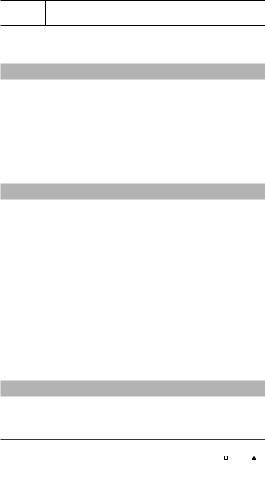
Disp
The display currently shows an intermediate result of a multi-statement calculation.
Important: For some type of calculation that takes a long time to execute, the display may show only the above indicators (without any value) while it performs the calculation internally.
Using Menus
Some of the calculator’s operations are performed using menus. Pressingor @, for example, will display a menu of applicable functions.
The following are the operations you should use to navigate between menus.
•You can select a menu item by pressing the number key that corresponds to the number to its left on the menu screen.
•The indicator in the upper right corner of a menu means there is another menu below the current one. The > indicator means another menu above. Use A and D to switch between menus.
•To close a menu without selecting anything, press .
Specifying the Calculation Mode
When you want to perform this type of |
Perform this key |
operation: |
operation: |
General calculations |
(COMP) |
|
|
Complex number calculations |
(CMPLX) |
|
|
Statistical and regression calculations |
(STAT) |
|
|
Calculations involving specific number |
|
systems (binary, octal, decimal, |
(BASE-N) |
hexadecimal) |
|
|
|
Equation solution |
(EQN) |
|
|
Matrix calculations |
(MATRIX) |
Generation of a number table based on an |
(TABLE) |
expression |
|
Vector calculations |
(VECTOR) |
|
|
Note: The initial default calculation mode is the COMP Mode.
Configuring the Calculator Setup
First perform the following key operation to display the setup menu:(SETUP). Next, use A and D and the number keys to configure the settings you want.
Underlined ( ___ ) settings are initial defaults.
MthIO LineIO Specifies the display format.
Natural Display (MthIO) causes fractions, |
|
irrational numbers, and other expressions to be |
|
displayed as they are written on paper. |
|
|
|
E-5
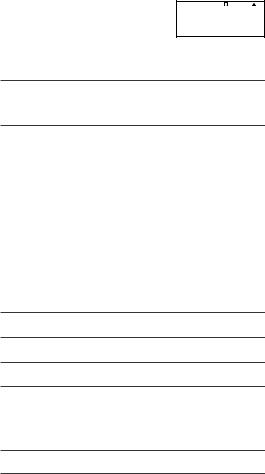
Linear Display (LineIO) causes fractions and other expressions to be displayed in a single line.
Note: • The calculator switches to Linear Display automatically whenever you enter the STAT, BASE-N, MATRIX, or VECTOR Mode. • In this manual, the symbol next to a sample operation indicates Natural Display, while the 1 symbol indicates Linear Display.
Deg Rad Gra Specifies degrees, radians or grads as the angle unit for value input and calculation result display.
Note: In this manual, the B symbol next to a sample operation indicates degrees, while the * symbol indicates radians.
Fix Sci Norm Specifies the number of digits for display of a calculation result.
Fix: The value you specify (from 0 to 9) controls the number of decimal places for displayed calculation results. Calculation results are rounded off to the specified digit before being displayed.
Example: 1 100 ÷ 7 = 14.286 (Fix 3)
14.29(Fix 2)
Sci: The value you specify (from 1 to 10) controls the number of significant digits for displayed calculation results. Calculation results are rounded off to the specified digit before being displayed.
Example: 1 1 ÷ 7 = 1.4286 σ 10–1 |
(Sci 5) |
1.429 σ 10–1 |
(Sci 4) |
Norm: Selecting one of the two available settings (Norm 1, Norm 2) determines the range in which results will be displayed in non-exponential format. Outside the specified range, results are displayed using exponential format.
Norm 1: 10–2 |x|, |x| > 1010 Norm 2: 10–9 |x|, |x| > 1010 Example: 1 1 ÷ 200 = 5 σ 10–3 (Norm 1)
0.005 (Norm 2)
A ab/c A d/c Specifies either mixed fraction (ab/c) or improper fraction (d/c) for display of fractions in calculation results.
A CMPLX a+bi ; r θ Specifies either rectangular coordinates (a+bi) or polar coordinates (r θ) for EQN Mode solutions.
A STAT ON ; OFF Specifies whether or not to display a FREQ (frequency) column in the STAT Mode Stat Editor.
A Disp Dot ; Comma Specifies whether to display a dot or a comma for the calculation result decimal point. A dot is always displayed during input.
Note: When dot is selected as the decimal point, the separator for multiple results is a comma (,). When comma is selected, the separator is a semicolon (;).
A ;CONT Adjusts display contrast. See “Adjusting Display Contrast” for details.
E-6
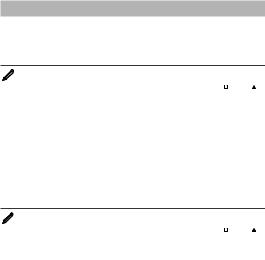
Initializing Calculator Settings
Perform the following procedure to initialize the calculator, which returns the calculation mode to COMP and returns all other settings, including setup menu settings, to their initial defaults.
(CLR) (Setup) (Yes)
Inputting Expressions and Values
Basic Input Rules
Calculations can be input in the same form as they are written. When you press the priority sequence of the input calculation will be evaluated automatically and the result will appear on the display.
4 σσsin30 σσ(30 + 10 σσ3) = 120 |
|
|
|
||||
4 Q30 30 10 |
3 |
|
|||||
|
|||||||
|
|
1 |
|
|
|
|
|
|
* |
|
|
|
|
|
|
|
|
|
|
|
|
||
*2 |
|
|
|
*3 |
|
||
*1 Input of the closing parenthesis is required for sin, sinh, and other functions that include parentheses.
*2 These multiplication symbols (σ) can be omitted. A multiplication symbol can be omitted when it occurs immediately before an opening parenthesis, immediately before sin or other function that includes parentheses, immediately before the Ran# (random number) function, or immediately before a variable (A, B, C, D, E, F, M, X, Y), scientific constants, Π or e.
*3 The closing parenthesis immediately before the operation can be omitted.
Input example omitting |
*2 and *3 operations in the above |
||
example. |
|
|
|
|
|
|
|
4 Q30 30 10 |
3 |
|
|
|
|
|
|
|
|
|
|
Note: • If the calculation becomes longer than the screen width during input, the screen will scroll automatically to the right and the ; indicator will appear on the display. When this happens, you can scroll back to the left by using B and C to move the cursor. • When Linear Display is selected, pressing Dwill cause the cursor to jump to the beginning of the calculation, while A will jump to the end. • When Natural Display is selected, pressing C while the cursor is at the end of the input calculation will cause it to jump to the beginning, while pressing B while the cursor is at the beginning will cause it to jump to the end. • You can input up to 99 bytes for a calculation. Each numeral, symbol, or function normally uses one byte. Some functions require three to 13 bytes. • The cursor will change shape to Iwhen there are 10 bytes or less of allowed input remaining. If this happens, end calculation input and then press .
Calculation Priority Sequence
The priority sequence of input calculations is evaluated in accordance with the rules below. When the priority of two expressions is the same, the calculation is performed from left to right.
E-7

1st |
Parenthetical expressions |
|
|
|
|
2nd |
Functions that require an argument to the right and a closing |
|
parenthesis “)” following the argument. |
||
|
||
3rd |
Functions that come after the input value (x2, x3, x–1, x!, °’ ”, °, r, g, |
|
%, t), powers (x9), roots ( ) |
||
|
||
4th |
Fractions |
|
|
Negative sign (–), base-n symbols (d, h, b, o) |
|
|
Note: When squaring a negative value (such as –2), the value |
|
|
being squared must be enclosed in parentheses ( 2 7 |
|
5th |
). Since x2 has a higher priority than the negative sign, |
|
|
inputting 2 7 would result in the squaring of 2 and then |
|
|
appending a negative sign to the result. Always keep the priority |
|
|
sequence in mind, and enclose negative values in parentheses |
|
|
when required. |
|
|
|
|
6th |
Metric conversion commands (cm in, etc.), |
|
STAT Mode estimated values (K, L, K1, K2) |
||
|
||
|
|
|
7th |
Multiplication where the multiplication sign is omitted |
|
|
|
|
8th |
Permutation (nPr), combination (nCr), complex number polar |
|
coordinate symbol ( ) |
||
|
||
|
|
|
9th |
Dot product (·) |
|
|
|
|
10th |
Multiplication, division (σ, ÷) |
|
|
|
|
11th |
Addition, subtraction (+, –) |
|
|
|
|
12th |
Logical AND (and) |
|
|
|
|
13th |
Logical OR, XOR, XNOR (or, xor, xnor) |
|
|
|
Inputting with Natural Display
Selecting Natural Display makes it possible to input and display fractions and certain functions (log, x2, x3, x9, , , , x−1, 109, e9, ° , d/dx, 3, Abs) just as they are written in your textbook.
|
2 + '2 |
|
|
|
|
|
|
|
|
|
1 + '2 |
|
|
|
|
|
|
|
|
|
|
2 |
2 CC1 2 |
|
|
|
|
|
|
|
|
|
|
|
Important: • Certain types of expressions can cause the height of a calculation formula to be greater than one display line. The maximum allowable height of a calculation formula is two display screens (31 dots σ 2). Further input will become impossible if the height of the calculation you are inputting exceeds the allowable limit. • Nesting of functions and parentheses is allowed. Further input will become impossible if you nest too many functions and/or parentheses. If this happens, divide the calculation into multiple parts and calculate each part separately.
Note: When you press and obtain a calculation result using Natural Display, part of the expression you input may be cut off. If you need to view the entire input expression again, press and then use B and C to scroll the input expression.
E-8

Using Values and Expressions as Arguments
(Natural Display only)
A value or an expression that you have already input can be used as the
7
6 , for example, you can make
|
7 |
7 |
|
||
To input 1 + |
|
and then change it to 1 +'6 |
|
||
6 |
|
||||
|
|
1 7 6 |
|
|
|
|
|
|
|
|
|
|
|
|
|
|
|
|
|
|
|
|
|
|
|
BBBB&(INS) |
|
|
|
|
|
|
|
||
|
|
|
|
|
|
|
|
|
|
|
|
|
|
|
|
|
|
|
|
|
|
|
|
|
|
|
|
|
|
As shown above, the value or expression to the right of the cursor after &(INS) are pressed becomes the argument of the function that is specified next. The range encompassed as the argument is everything up to the first open parenthesis to the right, if there is one, or everything up to the first function to the right (sin(30), log2(4), etc.)
This capability can be used with the following functions: , , ,( ), ( ), ( ), 5( ), 2( ), ,, ( ), @(Abs).
Overwrite Input Mode (Linear Display only)
You can select either insert or overwrite as the input mode, but only while Linear Display is selected. In the overwrite mode, text you input replaces the text at the current cursor location. You can toggle between the insert and overwrite modes by performing the operations: &(INS). The cursor appears as “I” in the insert mode and as “ ” in the overwrite mode.
” in the overwrite mode.
Note: Natural Display always uses the insert mode, so changing display format from Linear Display to Natural Display will automatically switch to the insert mode.
Correcting and Clearing an Expression
To delete a single character or function: Move the cursor so it is directly to the right of the character or function you want to delete, and then press &. In the overwrite mode, move the cursor so it is directly under the character or function you want to delete, and then press &.
To insert a character or function into a calculation: Use B and C to move the cursor to the location where you want to insert the character or function and then input it. Be sure always to use the insert mode if Linear Display is selected.
To clear all of the calculation you are inputting: Press .
Toggling Calculation Results
While Natural Display is selected, each press of 5 will toggle the currently displayed calculation result between its fraction form and decimal form, itsform and decimal form, or its Π form and decimal form.
E-9
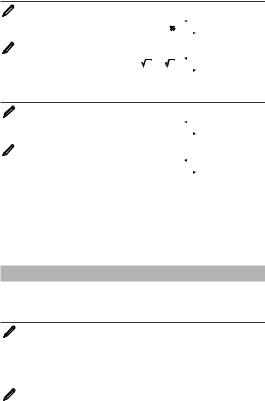
Π ÷ 6 = |
1 |
= 0.5235987756 |
|
6 |
|||
|
|
(Π) 6 |
|
1 |
|
|
|
f |
0.5235987756 |
|||||
6 |
||||||||||||
|
|
|
|
|
|
|
|
|
|
|||
|
|
|
|
|
|
|
|
|
|
|||
(' + 2) σ ' = |
'6 + 2'3 |
= 5.913591358 |
|
|
||||||||
2 |
3 |
|
|
|
|
|
|
|
|
|
||
|
2 C 2 |
3 '6 + 2'3 |
|
|
5.913591358 |
|||||||
f |
||||||||||||
|
|
|
|
|
|
|
|
|
|
|
|
|
|
|
|
|
|
|
|
|
|
|
|
|
|
While Linear Display is selected, each press of 5 will toggle the currently displayed calculation result between its decimal form and fraction form.
1 |
÷ 5 = 0.2 = |
1 |
|
|
|
|
|
|
|
|||||
|
|
1 |
|
|
|
|
|
|||||||
|
|
|
|
|
|
5 |
|
0.2 |
|
|
|
|
1Y5 |
|
1 |
5 |
|
|
|
|
f |
||||||||
|
|
|
|
|
|
|
|
|
|
|
|
|
|
|
|
|
|
|
|
|
|
|
|
|
|
|
|
|
|
1 |
– |
4 |
= |
1 |
= 0.2 |
|
|
|
|
|
|
|||
|
|
1 |
|
|
|
|
|
|||||||
|
5 |
|
5 |
|
|
|
1Y5 |
|
|
|
|
0.2 |
||
1 |
4 |
5 |
f |
|||||||||||
|
|
|
|
|
|
|
|
|
|
|
|
|
|
|
|
|
|
|
|
|
|
|
|
|
|
|
|
|
|
Important: • Depending on the type of calculation result that is on the display when you press the 5 key, the conversion process may take some time to perform. • With certain calculation results, pressing the 5 key will not convert the displayed value.
Note: With Natural Display, pressing instead of after inputting a calculation will display the calculation result in decimal form. Pressing 5 after that will switch to the fraction form or Π form of the calculation result. The form of the result will not appear in this case.
Basic Calculations
Fraction Calculations
Note that the input method for fractions is different, depending upon whether you are using Natural Display or Linear Display.
|
2 |
+ |
1 |
= |
7 |
|
2 3 C 1 2 7 |
|||||||
3 |
2 |
6 |
||||||||||||
|
|
|
|
|
|
|
|
6 |
||||||
|
|
|
|
|
|
|
|
|
or 2 A3 C 1 A2 |
7 |
||||
|
|
|
|
|
|
|
|
|
|
|
|
|
6 |
|
|
|
|
|
|
|
|
1 |
|
2 3 1 2 7Y6 |
|||||
|
|
|
|
|
|
|
|
|
|
|
|
|
|
|
|
|
|
1 |
|
|
1 |
|
|
|
|
|
|
1 |
|
|
|
|
|
|
|
|
|
|
|
|
|
|||
|
4 − 3 |
2 |
= |
2 |
|
|
4 |
( |
|
) 3 C1 A2 |
2 |
|||
|
|
|
|
|
|
|
1 |
|
|
4 3 1 2 1Y2 |
||||
|
|
|
|
|
|
|
|
|
|
|
|
|
|
|
Note: • Mixing fractions and decimal values in a calculation while Linear Display is selected will cause the result to be displayed as a decimal value.
• Fractions in calculation results are displayed after being reduced to their lowest terms.
To switch a calculation result between improper fraction and mixed fraction format: Perform the following key operation: 5( )
To switch a calculation result between fraction and decimal format:
Press 5.
E-10

Percent Calculations
Inputting a value and pressing (%) causes the input value to become a percent.
150 σσ20% = 30 |
150 20 (%) 30 |
Calculate what percentage of 880 is 660. (75%)
660 880 (%) 75
Increase 2500 by 15%. (2875)
2500 2500 15 (%) 2875
Discount 3500 by 25%. (2625)
3500 3500 25 (%) 2625
Degree, Minute, Second (Sexagesimal) Calculations
Performing an addition or subtraction operation between sexagesimal values, or a multiplication or division operation between a sexagesimal value and a decimal value will cause the result to be displayed as a sexagesimal value. You also can convert between sexagesimal and decimal. The following is the input format for a sexagesimal value: {degrees} {minutes} {seconds} .
Note: You must always input something for the degrees and minutes, even if they are zero.
2°20´30˝ + 39´30˝ = 3°00´00˝ 2 20 30 0 39 30 3°0´0˝
Convert 2°15´18˝ to its decimal equivalent.
2 15 18 2°15´18˝
(Converts sexagesimal to decimal.) |
|
2.255 |
(Converts decimal to sexagesimal.) |
2°15´18˝ |
|
|
|
|
Multi-Statements
You can use the colon character (:) to connect two or more expressions and execute them in sequence from left to right when you press .
3 + 3 : 3 σ 3 |
3 3 (:) 3 3 |
6 |
|
|
9 |
|
|
|
Using Engineering Notation
A simple key operation transforms a displayed value to engineering notation.
Transform the value 1234 to engineering notation, shifting the decimal point to the right.
1234 |
1234 |
$ 1.234×103 $ 1234×100
E-11
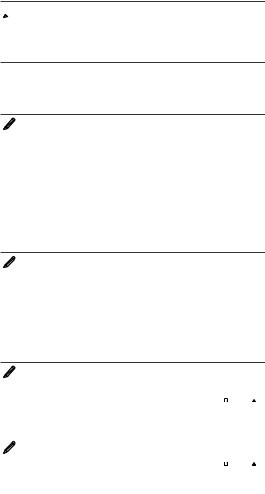
 Transform the value 123 to engineering notation, shifting the decimal point to the left.
Transform the value 123 to engineering notation, shifting the decimal point to the left.
123 |
123 |
$(κ) 0.123×103$(κ) 0.000123×106
Calculation History
In the COMP, CMPLX, or BASE-N Mode, the calculator remembers up to approximately 200 bytes of data for the newest calculation. You can scroll through calculation history contents using D and A.
1 + 1 = 2 |
1 1 |
2 |
|
2 + 2 = 4 |
2 2 |
|
4 |
3 + 3 = 6 |
3 3 |
|
6 |
|
(Scrolls back.) |
D |
4 |
|
(Scrolls back again.) |
D |
2 |
|
|
|
|
Note: Calculation history data is all cleared whenever you press , when you change to a different calculation mode, when you change the display format, or whenever you perform any reset operation.
Replay
While a calculation result is on the display, you can press B or C to edit the expression you used for the previous calculation.
4 |
× 3 |
+ 2.5 |
= 14.5 |
1 |
4 3 2.5 |
|
14.5 |
4 |
× 3 |
− 7.1 |
= 4.9 |
(Continuing) B&&&& 7.1 |
|
4.9 |
|
|
|
|
|
|
|
|
|
Note: If you want to edit a calculation when the indicator is on the right side of a calculation result display (see “Reading the Display”), press and then use B and C to scroll the calculation.
Answer Memory (Ans)
The last calculation result obtained is stored in Ans (answer) memory. Ans memory contents are updated whenever a new calculation result is displayed.
To divide the result of 3 σ 4 by 30 |
1 |
|
|
|
|
|
|
3 4 |
|
|
|
|
|
|
|
||
|
(Continuing) |
30 |
|
|
|
|
|
|
|||
|
|
|
|
||
|
|
|
|
|
|
123 |
+ 456 = 579 123 456 |
|
|
||
|
|||||
|
|
|
|
||
789 |
– 579 = 210 |
|
|
|
|
|
|
|
|
||
|
(Continuing) 789 |
|
|||
|
|
|
|
|
|
|
|
|
|
|
|
E-12

Variables (A, B, C, D, E, F, X, Y)
Your calculator has eight preset variables named A, B, C, D, E, F, X, and Y. You can assign values to variables and also use the variables in calculations.
To assign the result of 3 + 5 to variable A |
|
|
|
3 5 =(STO)E(A) |
8 |
||
To multiply the contents of variable A by 10 |
|
|
|
(Continuing) |
E(A) |
10 |
80 |
To recall the contents of variable A (Continuing) |
=E(A) |
8 |
|
To clear the contents of variable A |
0 =(STO)E(A) |
0 |
|
|
|
|
|
Independent Memory (M)
You can add calculation results to or subtract results from independent memory. The “M” appears on the display when there is any value other than zero stored in independent memory.
To clear the contents of M |
0 =(STO)J(M) |
0 |
|
To add the result of 10 σ 5 to M |
(Continuing) |
10 5 J |
50 |
To subtract the result of 10 + 5 from M |
|
15 |
|
(Continuing) 10 5 J(M–) |
|||
To recall the contents of M |
(Continuing) |
=J(M) |
35 |
|
|
|
|
Note: Variable M is used for independent memory.
Clearing the Contents of All Memories
Ans memory, independent memory, and variable contents are retained even if you press , change the calculation mode, or turn off the calculator. Perform the following procedure when you want to clear the contents of all memories.
(CLR) (Memory) (Yes)
Function Calculations
For actual operations using each function, see the “Examples” section following the list below.
: Π is displayed as 3.141592654, but Π = 3.14159265358980 is used for internal calculations.
e: e is displayed as 2.718281828, but e = 2.71828182845904 is used for internal calculations.
sin, cos, tan, sin−1, cos−1, tan−1 : Trigonometric functions. Specify the angle unit before performing calculations. See  1.
1.
sinh, cosh, tanh, sinh−1, cosh−1, tanh−1 : Hyperbolic functions. Input a function from the menu that appears when you press @. The angle unit setting does not affect calculations. See  2.
2.
E-13
